Chicken with White Wine Sauce
A delicious pan sauce is created using the fond from searing chicken, along with onions, shallots, cream and most importantly – white wine! Oh boy does chicken gets a major revamping in this recipe.

How I Started Cooking with Wine
Who doesn’t love wine? Be it white, red, rose – doesn’t matter! What I love most about wine is the depths and subtleties of the flavors. Now, I used to be afraid of cooking with wine. Although I loved drinking it, I was always apprehensive about cooking with it – it seemed like such a difficult thing to work with, something that only professionals would dare try. It wasn’t until I was at a restaurant and ordered beef short rib that my entire world changed. This short rib was so succulent with such depth of flavor – I had never tasted something so delicious in my life. It was at that point that my love affair with cooking with wine began.
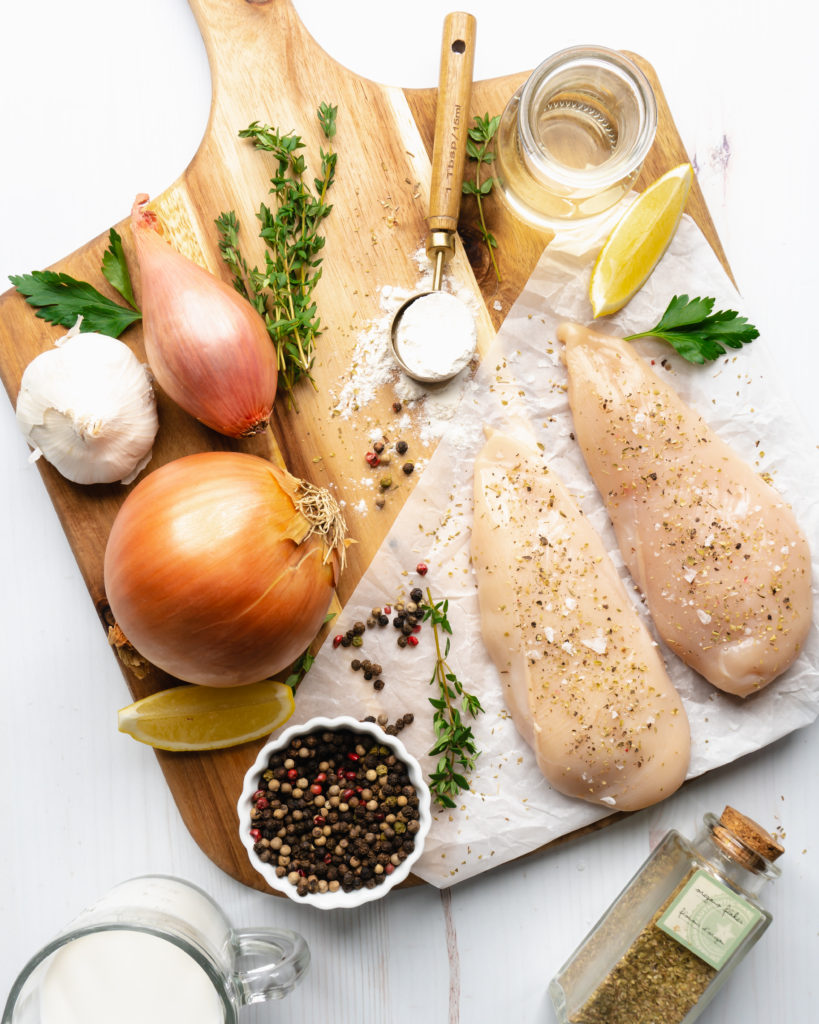
The Uses of Wine in Cooking
Wine is so versatile in the culinary arts. It can be used to tenderize meat in a marinade – due to the acidity in the wine. Wine can also be used to enhance flavor in your dish. It can be used to deglaze a pan, as a reduced sauce, or even as a steaming liquid. By cooking with wine, we are boiling out the alcohol – and along with it goes that harsh flavor, and what we’re are left with is a deeply sweet, aromatic, and slightly acidic flavor that can pair so well with certain foods.
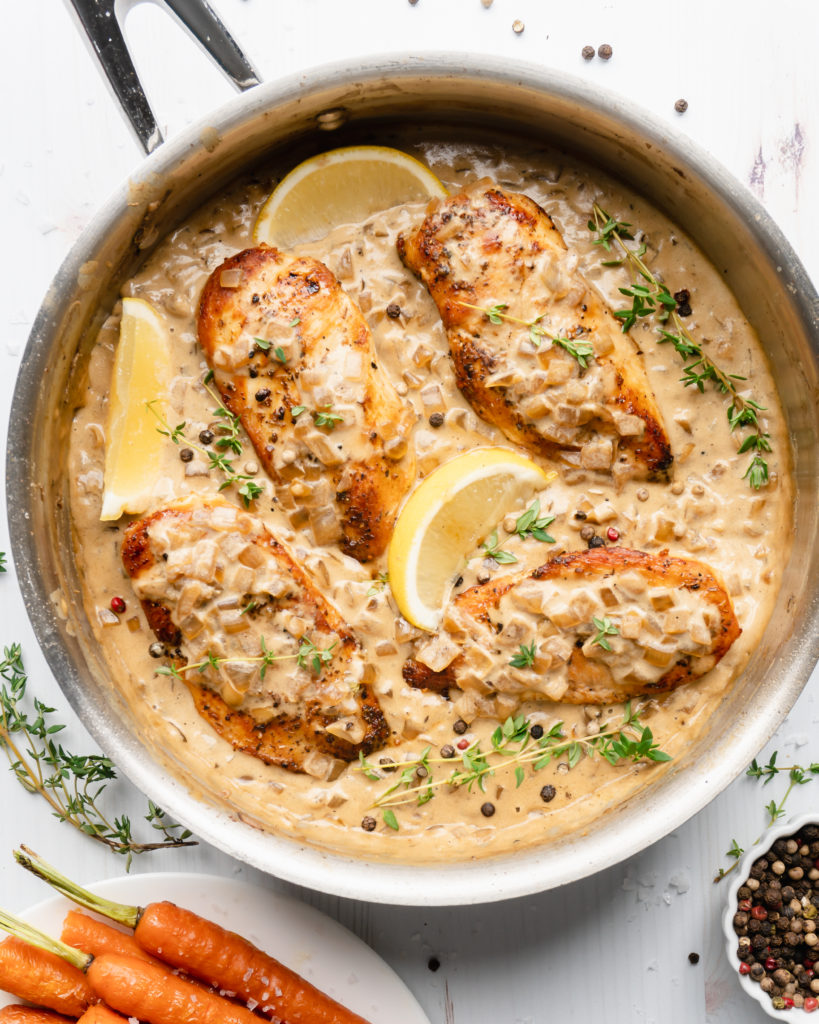
Important Things to Note
There are a few things to be conscious about when cooking with wine, however. The first rule of cooking with wine is DON’T USE WINE YOU WOULDN’T DRINK. Now this doesn’t mean not to use the relatively cheap $8 bottle of wine, this means not to use cooking wine. Cooking wine is, simply put, disgusting. They are full of salt, which is added to increase their shelf life, however this large concentration of salt is intensified when it is cooked down – leading to a terrible and unappetizing taste.
Another rule is to generally not use sweet wines. Yes, sometimes sweet wines have their place, such as in desserts or baking, but generally dry wines are better to use in cooking. This is because when we cook off the alcohol, the sugar concentration is increased, so of course the sweetness is increased. Another thing to consider is the acidity of the wine. Like with the sugar concentration, the acidity is also increased with cooking. Therefore, when cooking with wine, it is best to reduce other acids in your dish to accommodate for the wine, and to only use wine when extra tartness is desirable.
What Type of Wine and When?
I find that using wines that are described as “crisp”, “light”, or “fruity” (for white) or have “berry” or “fruity” tones and low-moderate tannins (for red) tend to be best. “Oak”-ey whites tend to not pair too well in most dishes, and a high tannin red can cause a chalky sensation. However, there is an exception for everything – such as using moderate-high tannin wines for some beef dishes. But we’ll get to that at a later date.
Good Whites: Sauvignon Blanc, Pinot Grigio, Pinot Gris, Pinot Blanc, Semillon, White Bordeaux
Good Reds: Pinot Noir, Sangiovese, Zinfandel, Chianti, Merlot
Again, generally low tannin red wines are always a safe bet, as are fruity crisp whites.
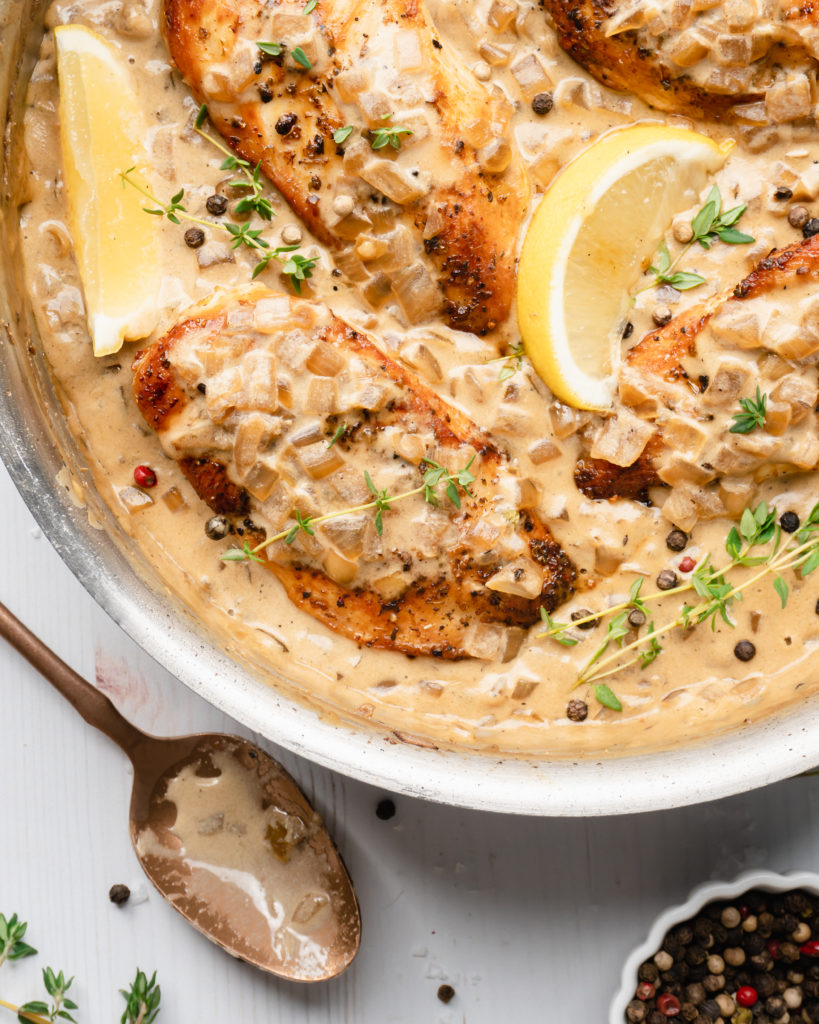
Making Chicken with White Wine Sauce
This white wine chicken has a wonderful bright flavor, and the pan-sauce is ever-so-slightly fruity, while simultaneously being rich and creamy. The pan-sauce has a texture and consistency very similar to gravy. Sometimes, I will strain all the pieces of onion and garlic out of my sauce, leaving me with a silky-smooth sauce, however sometimes I’ll leave them in leaving the sauce to be a little more rustic and chunky. I have also blended the sauce to be smooth as well, resulting in a stronger, but delicious, onion flavor. I love to serve the sauce over baby potatoes, but it also does well over pasta or even asparagus. Lastly, I also sometimes increase the amount of sauce, if I’m wanting more sauce over my potatoes, to do so I just increase all the sauce ingredients (onions, shallots, garlic, flour, white wine, half & half, and thyme) by 1.5x.
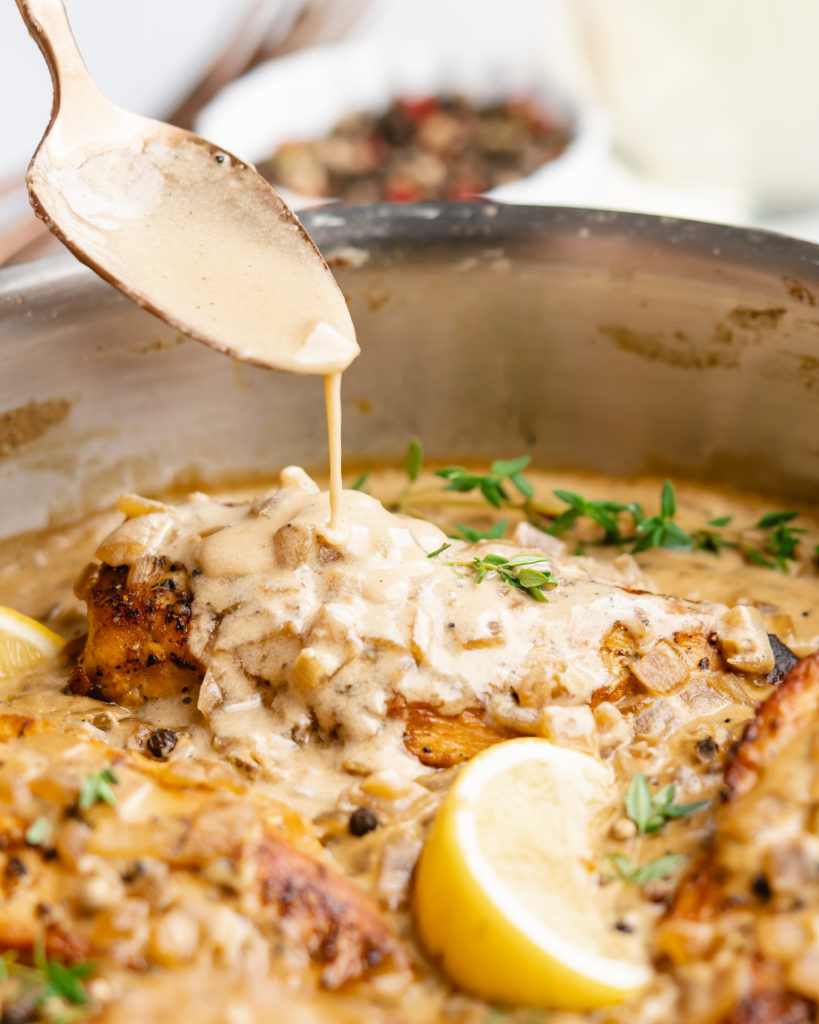
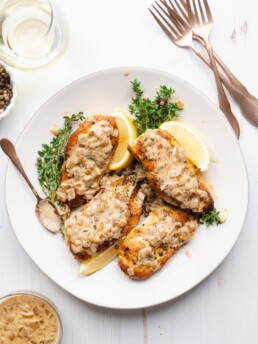
Get the Recipe: Chicken Breasts with White Wine Sauce
Ingredients
Optional: White Wine Marinade
- 1 1/2 cups Dry White Wine
- 1/2 cup Extra Virgin Olive Oil
- 2 tbsp Italian Seasoning
- 2 tbsp Crushed Garlic
- 1 tsp Kosher Salt
Chicken and White Wine Pan Sauce
- 4 Boneless, Skinless, Chicken Breasts
- 3 tbsp Butter,, divided
- 1 Medium Onion,, diced small
- 1 Large Shallot,, diced small
- 2 tbsp Crushed Garlic
- 1 tbsp Flour
- 1/2 cup Dry White Wine
- 1 1/2 cups Half & Half
- 5 sprigs Thyme
- 2 tsp Butter,, to finish
- 1 tsp Fresh Lemon Juice,, to finish
- Salt & Pepper,, to taste
Instructions
White Wine Marinade
- Add all ingredients into large Ziploc and marinate chicken breasts for at least 2 hours, or preferably overnight.
Chicken and White Wine Pan Sauce
- Preheat Oven to 400°F.
- Melt 1 tbsp butter in a large frying pan over medium heat. Season chicken with salt, pepper, and Italian seasoning, and then add chicken breasts to pan and brown well on both sides, about 3-4 minutes per side. Place chicken onto baking sheet and place in oven for 15-20 minutes, depending on breast size.
- Using previous frying pan, heat the remaining 2 tbsp of butter. Add onions and shallots to pan and season lightly with salt. Scrape at the bottom of the pan to release any browned bits. Cook onions until tender – about 7 minutes. Then add garlic and sauté for 1-2 minutes. Then add flour to pan, mix until combined with onions, cook for 1 minute.
- Add wine to pan, scrape again to release any browned bits, and cook until wine has reduced by half, about 3 minutes. Add half & half to pan, whisk to combine, then add whole thyme sprigs. Bring sauce to a bubble, then reduce to a simmer and cook until the sauce thickens. It should be similar to gravy consistency. Remove thyme sprigs. Season with salt and pepper, and finish with lemon juice and butter.
- (Optional) If choosing to strain, remove pan from heat and strain over a bowl, to make sauce smooth. Pour sauce over finished chicken and serve.
- Pour sauce over finished chicken and serve.


Can this be made ahead and then reheated when ready to serve?
Yes it can, however the chicken may be a bit dry when you serve it. As for reheating, I would suggest reheating the chicken in the oven at a low temperature, and reheating the sauce on the stove on medium-low!